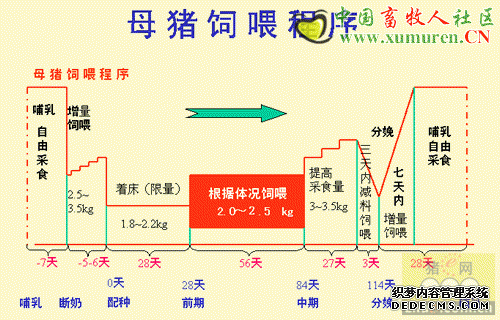It is almost impossible to eliminate house mice through sanitation alone because they can survive in very small areas with limited amounts of food and shelter. Most swine buildings can support a thriving population of house mice. Producers should store feeds in rodent-proof buildings, rooms, or containers whenever possible. Sacked feed should be stacked on pallets with adequate space around and under stored articles. This will allow easy inspection for evidence of rodent activity, and it will facilitate placement of traps or baits.
Rodent-proof construction. A lasting form of rodent control is to "build them out" by eliminating all openings through which they can enter a structure. Where feasible, rodent-proof all places where feed is stored, processed, or used. By gnawing, rats can gain entry through any opening greater than 1/2 inch across. Mice can enter a building through any opening larger than 1/4 inch across. To prevent rodent entry, seal all such holes with durable materials. Steel wool, packed tightly into openings, is a good temporary plug. To close openings or protect other areas subject to gnawing, use materials like concrete, galvanized sheet metal, wire mesh, aluminum or brick. Plastic sheeting or screen, wood, rubber, or other gnawable materials are not adequate for sealing openings used by rodents. Openings around augers, pipes, and wires where they enter structures should be closed with mortar, masonry, or metal collars. A common entry point for mice into buildings is the unprotected end of corrugated or ribbed metal siding. If not blocked with metal or mortar, these openings provide access into wall spaces and the building's interior. Rubber or vinyl weather stops are quickly gnawed through. Buildings should be designed or modified so that metal siding butts directly against the sill plate or foundation.
Doors, windows, and screens should fit tightly. It might be necessary to cover the edges with metal to prevent gnawing. Depending on the age and type of construction, it might not be feasible to rodent-proof the building. In such instances, more attention must be given to other techniques of rodent control. Rats can be discouraged from burrowing near foundations by laying a strip of coarse gravel around their perimeter. Gravel should be at least 1 inch in diameter and laid in a band at least 2 feet wide and 6 inches deep. Rat burrowing under concrete slabs or foundation walls also can be prevented by installing a buried curtain of 1/2-inch hardware cloth, extending down 12 to 18 inches with a lip at the bottom extending outward 12 inches.
Trapping. Trapping is an effective way to control rodents. House mice are relatively easy to trap, but rats require more skill and labor. Try trapping first where rodents are few; severe infestations will likely require additional measures. Trapping has several advantages: (1) it does not rely on potentially hazardous rodenticides; (2) success is easily visible; and (3) it allows for disposal of the rodent carcasses, thereby eliminating dead animal odors which may occur when poisoning is done within buildings.
The simple, inexpensive wooden snap trap is very effective. Set them so the trigger is sensitive and will spring easily. You can reduce the chance of creating trap-shy rodents by leaving traps baited but unset until the bait has been taken at least once. Multiple-capture live traps for mice are effective and save service time.
Set traps close to walls, behind objects, in dark corners, and in places where rodent activity is evident. Use patches of talc or flour to track where rodents are active. Traps may be placed on ledges or on top of pallets of stored materials if mice or rats are active there. Where possible, place snap traps so that rodents will pass directly over the trigger as they follow their natural course of travel, usually close to a wall. Some snap traps have enlarged triggers that catch rats or mice when they travel over them. When set correctly, it is possible to catch rodents that are not attracted to baits.
Use enough traps to make the campaign short and decisive. Mice seldom venture far from their shelter and food supply, so space snap traps no more than 10 feet apart in areas where mice are active. When using snap traps, it may be best to trap intensively for 2 to 3 weeks and then "rest" for a couple weeks. This may save some labor costs and will help prevent rodents from becoming "trap-shy." Place multiple-catch traps in areas where mice are persistent and where mice are gaining access to the building (for example, on both sides of doorways). Multiple-catch traps should be checked frequently to remove captured mice.
Glue boards are another type of rodent trap. Place glue boards along walls where rodents travel. Do not use them where humans and pigs have access to them, because they stick tenaciously to any object coming in contact with them. Glue boards lose their effectiveness in dusty areas unless covered, and temperature extremes also may affect their tackiness. To protect the glue board from dust and disturbance, place it inside a bait station, or install a special protective cover designed to fit over the glue board. Glue boards are more effective for capturing mice than rats.
声明
来源:互联网
本文地址:http://farm.00-net.com/yz/zhu/5/2007-09-20/142448.html








